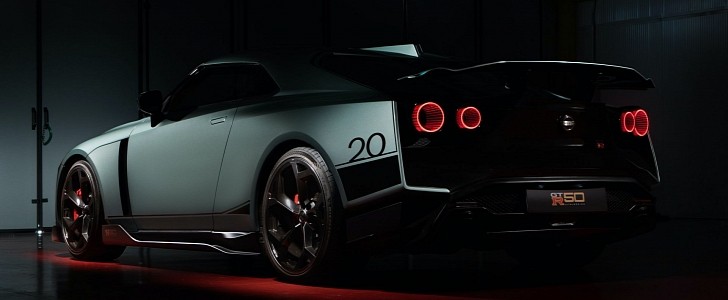A very different animal from the first and second Skyline GT-R generations, the R32 was more than a car. It was a statement, and Godzilla kept getting better with each and every iteration of the two-door coupe with twin-turbo power.
Launched in 2007 without the Skyline prefix, the R35 is the ultimate embodiment of on-street performance for Nissan. Although it’s showing its age after so many years of production and so few updates in this time frame, the GT-R isn’t sitting still. According to Automotive News, the next gen will roll out in 2023.
As part of the Future Product Pipeline series, the cited publication had a chat with chief operating officer Ashwani Gupta about the automaker’s upcoming models in the United States and beyond. As part of the revamp, Nissan considers a performance-focused hybrid system for the R36 generation of the GT-R.
A “kinetic energy recovery system,” to be more precise, which is a familiar solution to the GT-R LM NISMO that Nissan fielded at Le Mans five years ago. The sports prototype features an innovative KERS with two flywheels developed by Torotrak, and their role is to gain energy from the front brakes as well as to discharge that electricity back to the front and rear axles with the help of two driveshafts.
But wait, there’s more! Our previous coverage of the R36 includes a report that denies any hybrid assistance for the GT-R, at least not until the R37 generation. Chief product specialist of the GT-R and NISMO, Hiroshi Tamura, said that “99 percent of customers” don’t want a hybrid powertrain.
Unless that’s a bluff to hide what Nissan is actually working on, Tamura has a point. A hybrid is always harder to tune than an ICE-only powerplant, which is a big no-no for a tuner-friendly car such as the GT-R. When all is said and done, can Nissan afford to stand still while everyone goes hybrid to improve performance while saving fuel? The answer to that question is pretty obvious, isn’t it?
As part of the Future Product Pipeline series, the cited publication had a chat with chief operating officer Ashwani Gupta about the automaker’s upcoming models in the United States and beyond. As part of the revamp, Nissan considers a performance-focused hybrid system for the R36 generation of the GT-R.
A “kinetic energy recovery system,” to be more precise, which is a familiar solution to the GT-R LM NISMO that Nissan fielded at Le Mans five years ago. The sports prototype features an innovative KERS with two flywheels developed by Torotrak, and their role is to gain energy from the front brakes as well as to discharge that electricity back to the front and rear axles with the help of two driveshafts.
But wait, there’s more! Our previous coverage of the R36 includes a report that denies any hybrid assistance for the GT-R, at least not until the R37 generation. Chief product specialist of the GT-R and NISMO, Hiroshi Tamura, said that “99 percent of customers” don’t want a hybrid powertrain.
Unless that’s a bluff to hide what Nissan is actually working on, Tamura has a point. A hybrid is always harder to tune than an ICE-only powerplant, which is a big no-no for a tuner-friendly car such as the GT-R. When all is said and done, can Nissan afford to stand still while everyone goes hybrid to improve performance while saving fuel? The answer to that question is pretty obvious, isn’t it?











